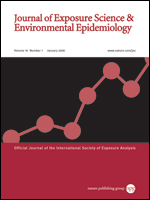
Researchers from AllerGen’s Canadian Healthy Infant Longitudinal Development (CHILD) Study have deeply assessed indoor and outdoor environmental exposures for 3,217 Canadian babies—an unprecedented accomplishment for any birth cohort.
The CHILD Study is examining how a child’s environment during pregnancy and in the first few years of life can interact with genetics to affect the risk of developing allergies, asthma, type 2 diabetes and other chronic diseases.
As part of the study, investigators conducted a careful inspection of over 3,000 babies’ homes, including an analysis of exposure to dust, mould, furry pets, chemicals and cleaning products, cooking emissions, second-hand smoke, and traffic-related air pollution.
No other study has analyzed the home environment of such a large number of study participants with this detail, and with the ability to learn about epigenetic changes and the potential role of the microbiome. A new CHILD Study publication in the Journal of Exposure Science and Environmental Epidemiology outlines which environmental factors were assessed, how this was accomplished and how the data might be analyzed.
“Asthma is the most common chronic childhood disease and many cases may be preventable,” says Dr. Tim Takaro, a professor at Simon Fraser University and the paper’s lead author. “The CHILD Study is helping us to gain a better understanding of the link between environment and health, which may help us to intervene early in life to prevent asthma from occurring.”
